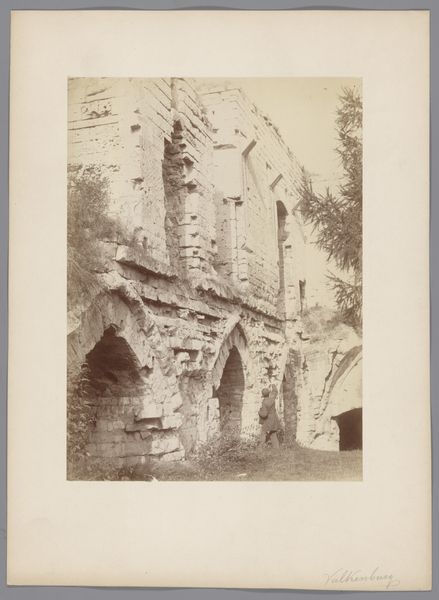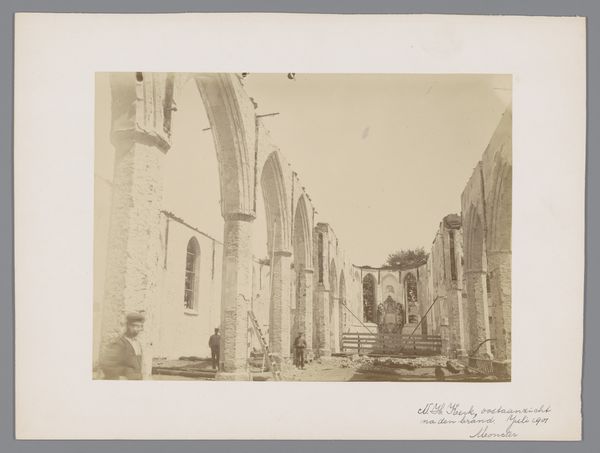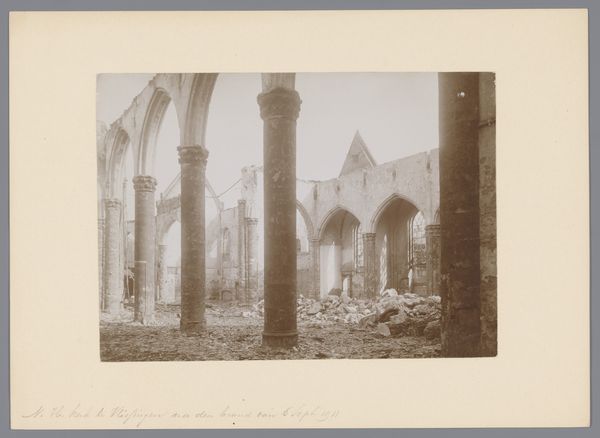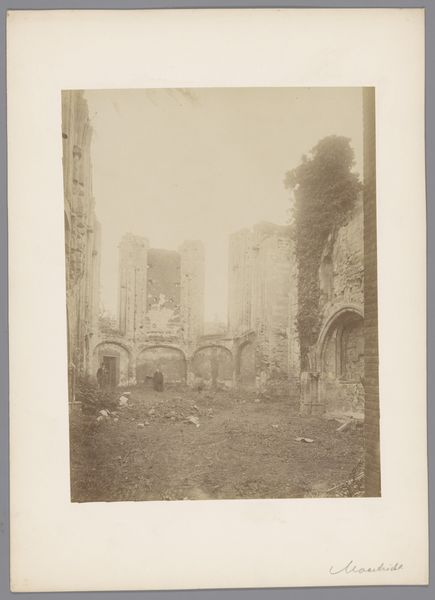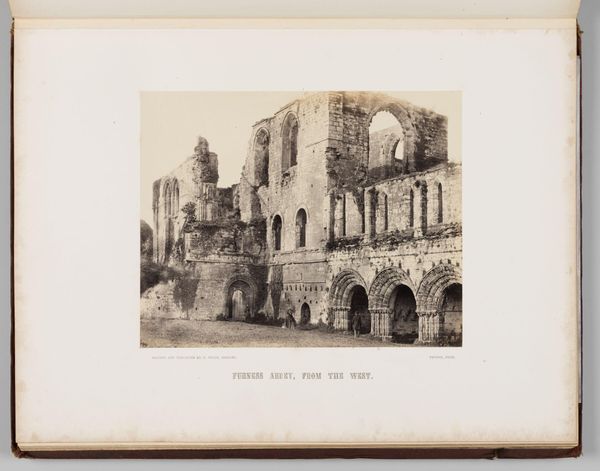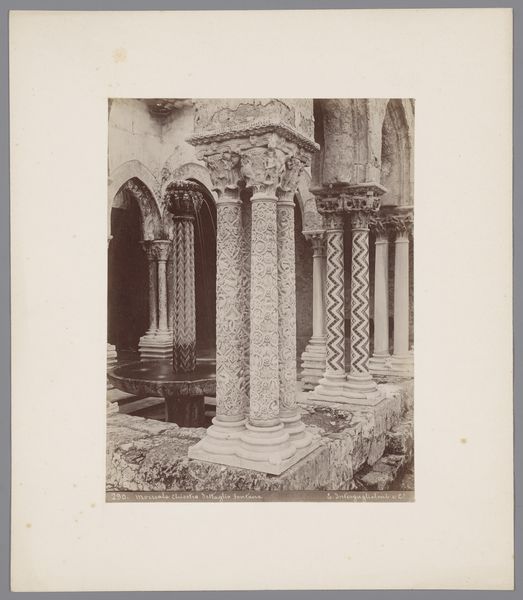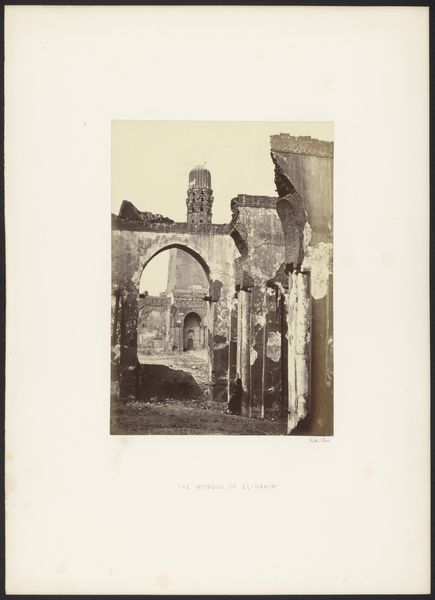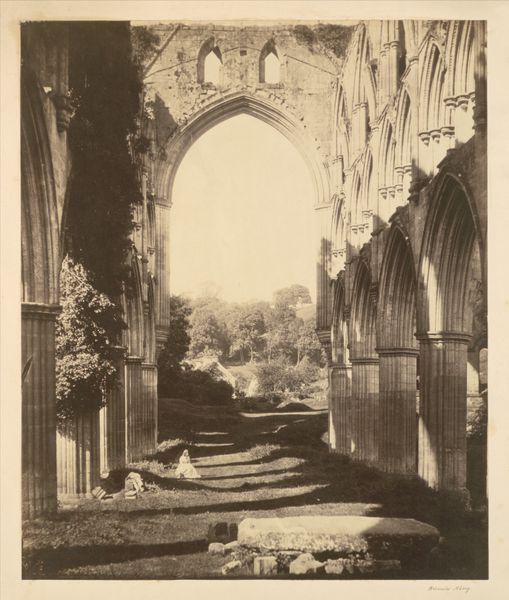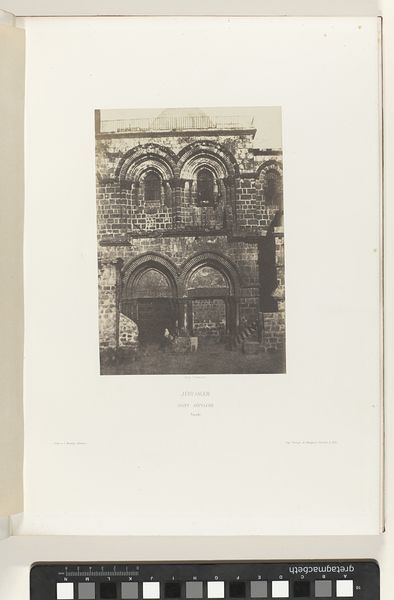
Dimensions: Image: 28 x 23.5 cm (11 x 9 1/4 in.) Mount: 43.9 x 30 cm (17 5/16 x 11 13/16 in.)
Copyright: Public Domain
Editor: This is “Rivaulx Abbey. General View from the South,” a gelatin silver print photograph from the 1850s by Joseph Cundall. It feels very romantic, almost melancholic, seeing this grand old abbey in ruins, slowly being embraced and taken over by nature. What do you see in this piece, beyond the obvious architectural decay? Curator: Ah, yes, the ruins whisper stories, don’t they? What I find captivating is the dance between decay and resilience. Cundall, in his photographic embrace, hasn’t just captured a building crumbling to dust. He's shown us nature reclaiming its space. The ivy isn't simply decoration; it's a living testament to time's passage, blurring the lines between the man-made and the organic. Notice the light – how it falls, almost reverently, on both stone and foliage. Makes you wonder about the human ambitions embodied within those walls, doesn’t it? Editor: It does. It makes me think about the ephemeral nature of human creation, doesn't it? Compared to the enduring force of nature, all our structures eventually surrender. Curator: Precisely! And that tension, that surrender, is potent. It's almost a memento mori, a reminder that everything fades, even these ambitious monuments. It makes you consider: is there a strange beauty in that inevitable decay? A freedom from structure, almost. It’s quite remarkable how Cundall evokes those questions through his photographic lens. Editor: Definitely. I'd always thought of ruins as just…sad. But seeing it like this, as nature kind of "winning," changes my perspective. It's a cycle. Curator: Absolutely. And cycles are anything but sad. There's peace there, a surrender to process, and a unique perspective on art as evidence of process. So, we are left to admire this moment in time. It might look very different now!
Comments
No comments
Be the first to comment and join the conversation on the ultimate creative platform.


